11 Foods That Can Cause High Cholesterol, Ranked by Saturated Fat Content

The statistics for high cholesterol are alarming, so it’s essential for your health to know the 15 foods that can cause high cholesterol, ranked by saturated fat content. According to the Centers for Disease Control and Prevention, “Nearly 94 million U.S. adults age 20 or older have total cholesterol levels above 200 mg/dL. Twenty-eight million adults in the United States have total cholesterol levels above 240 mg/dL.” While there are unmodifiable risk factors like age and family history, there are things we can do to help prevent the deadly condition like eating a healthy diet. One is targeting saturated fats, which tend to increase cholesterol levels in the blood. “People who are at risk for high cholesterol are those who have a diet high in saturated fats, obese individuals, and those with a genetic predisposition known as familial hyperlipidemia or hypercholesterolemia,” Jesse Feder, a personal trainer and registered dietitian with My Crohn’s and Colitis Team tells us. “Saturated fats are the bad fats that raise your LDL or bad cholesterol levels. This can lead to high cholesterol over time. People who are overweight or obese, typically have diets high in fats/calories that can lead to increased cholesterol levels.”
The CDC says having high cholesterol, “raises the risk for heart disease, the leading cause of death, and for stroke, the fifth leading cause of death.” Having healthy lifestyle choices and limiting harmful foods that have saturated fat lowers the risk of high cholesterol. The American Heart Association “recommends aiming for a dietary pattern that achieves 5% to 6% of calories from saturated fat. For example, if you need about 2,000 calories a day, no more than 120 of them should come from saturated fat. That’s about 13 grams of saturated fat per day.”
To help kickstart a healthier way to eat, Eat This, Not That! spoke with dietitians who reveal which foods are high in saturated fat and can cause high cholesterol, and ranked them from bad-for-you to the #1 worst. Read on to see what made number one, and for more, don’t miss 3 Foods Secretly Raising Your Cholesterol Over Time.
Deep-Fried Foods
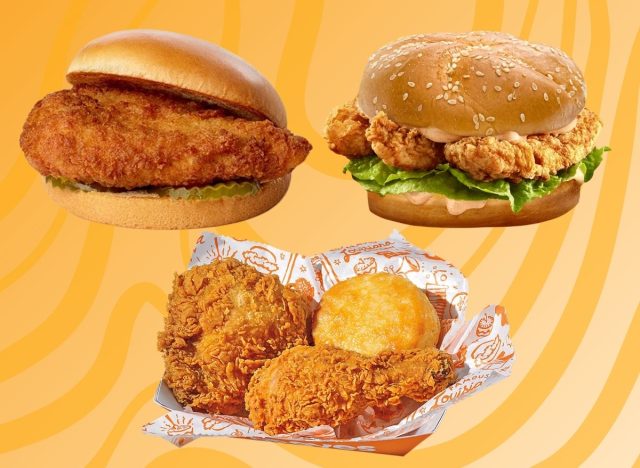
Saturated fat content: 4 grams per 1 serving french fries, 4 grams per fried chicken thigh
Dana Ellis Hunnes, PhD, MPH, RD, a senior dietitian at UCLA Medical Center, assistant professor at UCLA Fielding School of Public Health, and author with Cambridge University Press of the new book, Recipe for Survival tells us, “These can be fried in trans fats (or saturated fats) and that factor alone can increase cholesterol levels. In addition to that, most deep-fat fried foods are often coated with white flour/starch and are high in simple-carbohydrate to begin with, which in our body, acts like sugar. This increases IGF-1, insulin, and other inflammatory markers in the blood, which is associated with increased cholesterol and LDL cholesterol levels.”
Certain Vegetable Oils (Palm Oil, Coconut Oil, Etc.)
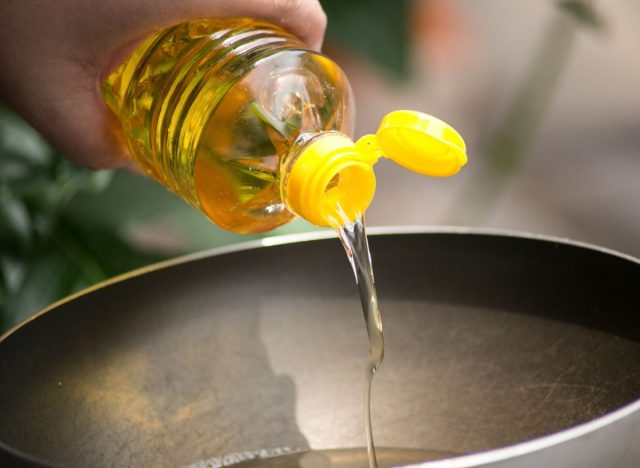
Saturated fat content: 7 grams per tablespoon palm oil, 11 grams per tablespoon coconut oil
Trista Best, RD, a Registered Dietitian, Environmental Health Specialist, and Adjunct Nutrition Professor says, “One tablespoon of palm oil equals 7 grams of saturated fat. 1 tablespoon of coconut oil equals 12 grams of saturated fat. These oils are often touted for being healthier to cook with than others, but when considering their impact on cholesterol this is not necessarily the case. Both of these tropical plant oils are high in saturated fat and are commonly used in large quantities as both cooking aids and ingredients. When sauteing vegetables in an attempt to be healthier palm or coconut oils as a significant amount of saturated fat to a dish, unnecessarily. Water can be used in place of oils to saute or other liquids like balsamic vinegar or soy sauce.”
Butter
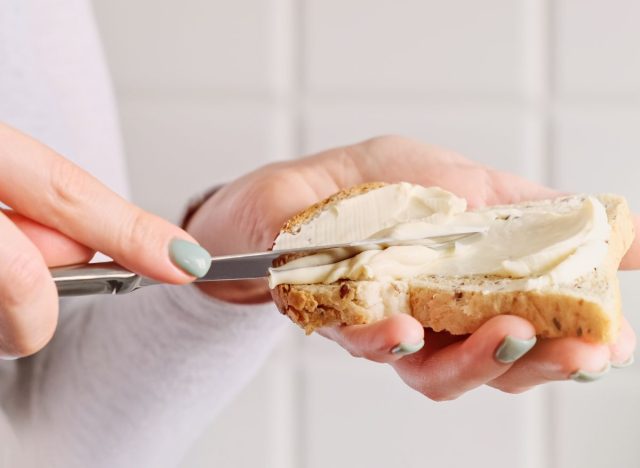
Saturated fat content: 7 grams per tablespoon
“One tablespoon of standard butter has 7 grams of saturated fat. There is nothing inherently bad about this, but for those at risk for high cholesterol, consuming this on a regular basis can cause cholesterol to rise quickly.” As butter is a staple item in just about every refrigerator, and “the regularity at which it’s used is the primary concern. Butter can be used during the cooking process and as an ingredient making it likely that the dish will be high in saturated fat,” says Best.
Chocolate
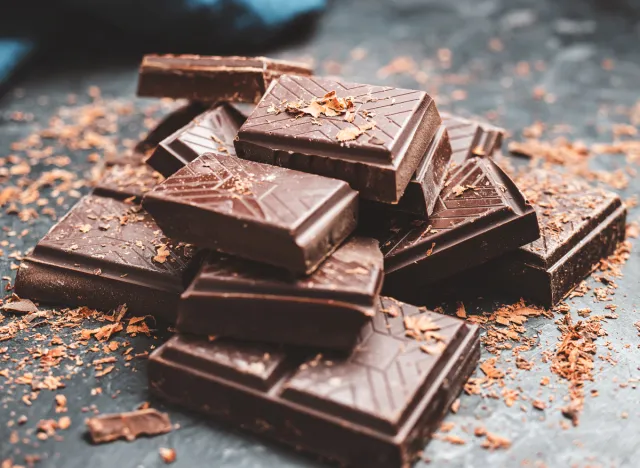
Saturated fat content: 8 grams per 1.5-ounce milk chocolate bar, 7 grams per 1-ounce dark chocolate bar
Feder explains, “It is a common misconception that since dark chocolate contains antioxidants and doctors recommend having it, that you can have as much as you want. Unfortunately, this is not entirely true, dark chocolate does have antioxidants and health benefits but should only be eaten in moderation. Additionally, having above 70% dark chocolate is better for your health and is best to avoid or limit milk chocolate. Milk chocolate has just as much saturated fat and also contains more sugar and no health benefits.”
Processed Meat (Bacon, Sausage, Bologna, Etc)
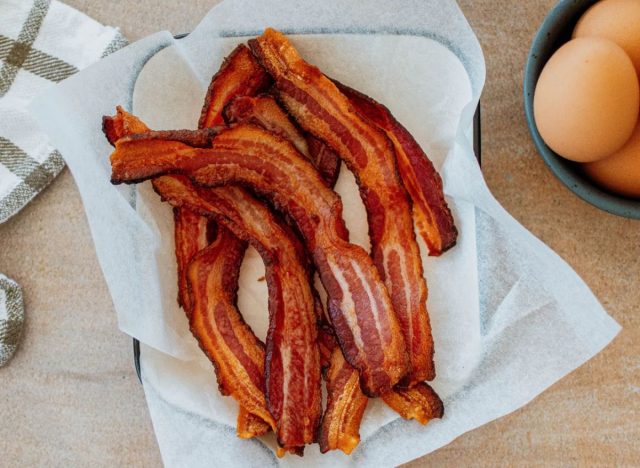
Saturated fat content: 10 grams per 3 ounces bacon
Hunnes says “Processed meats are a known carcinogen – especially for colorectal cancer. But, these meats also are high in saturated fat and metabolites (TMAO) that increase cholesterol on their own as well as inflammation through IGF-1, insulin, and negatively affect the microbiome. Once again, all of these factors combined increase cholesterol levels and LDL cholesterol levels.” The USDA says bacon has 1.1 grams of saturated fat. The BMJ says, “Processed meat accounted for 16% of saturated fat intake, while unprocessed (carcass) meat was 5%, fish 1% and eggs 1% of saturated fat intake.”
Frozen Blended Coffees (ie. Frappuccino)

Saturated fat content: 11 grams per 24-ounce Venti
A 24-ounce Caramel Frappuccino has 11 grams of saturated fat and 72 grams of added sugar. “These sugary coffee blends are often used more for their filling nature as a replacement for actual food than their coffee content. They are relatively low in caffeine, some having no caffeine at all, and high in saturated fat and added sugar,” says Best. “Consumers are better off making their own blended coffee where the ingredients can be controlled and cholesterol-lowering ingredients can be added, like ground flax and almond milk.”
Macaroni and Cheese
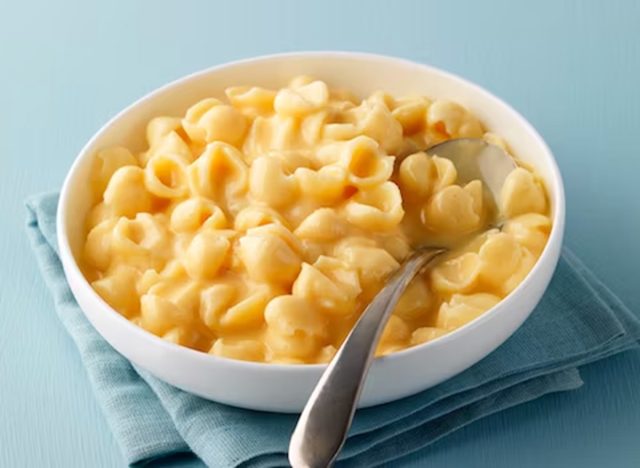
Saturated fat content: 12 grams per 1 cup, homemade
Best says, “Cheese-based foods are typically made with traditional cheddar cheese that has been shredded. With more than 1 cup likely being used for each recipe this puts cheese-based dishes [like macaroni and cheese] easily between 50 and 100 grams of saturated fat [per recipe].” That equates to 12 grams of saturated fat per one-cup serving, which is likely less than the average person eats per sitting.
A Breakfast Sandwich ala the Sausage McMuffin With Egg
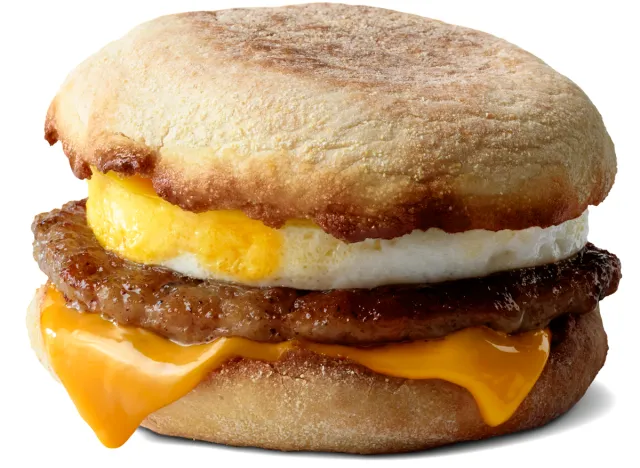
Saturated fat content: 12 grams per sandwich
Nichole Dandrea, MS, RDN, Registered Dietitian Nutritionist with Purely Planted and Author of The Fiber Effect tells us, “Any fast food or diner sausage egg biscuit or muffin is a triple whammy due to the saturated fat in the butter used to make the biscuit, the saturated fat in the bacon, and the saturated fat in the egg. McDonald’s Sausage McMuffin with Egg has 12 grams of saturated fat. The American Heart Association recommends a saturated fat intake of 5–6% of total calories. Based on a 2000 calorie diet, that would be a total of 11-13 grams a day. One McMuffin, or an equivalent breakfast sandwich with sausage and egg, contains nearly all of the saturated fat you should have in one day.”
Ice Cream

Saturated fat content: 22 grams per 1 cup of vanilla ice cream
Best shares, “Full-fat dairy products, like ice cream, contain a significant amount of saturated fat. This is especially [concerning] when considering the amount that is used and the high-fat ingredients that are often paired with them. For instance, ice cream is commonly topped with other foods high in saturated fat such as chocolate syrups, candies, and whipped cream.” Best recommends considering lower-fat options or cutting down on the number of times you consume ice cream.
Red Meat
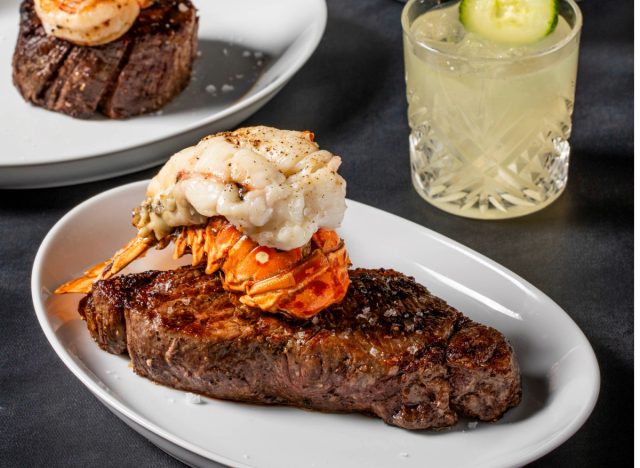
Saturated fat content: 30 grams per T-bone steak, 16 grams per 1/2 rack BBQ ribs (like from Outback Steakhouse)
According to Hunnes, “Red meat increases cholesterol levels for several reasons. It is inflammatory – which in and of itself may increase LDL (bad cholesterol) and total cholesterol levels. Red meat also increases TMAO and IGF-1 (an inflammatory marker). We are constantly learning more that there are relationships between inflammation, TMAO, and increased cholesterol levels.” The Mayo Clinic says, “Wondering which cuts of beef are the leanest? Check the label. The labels on cuts of beef are considered nutrition claims, so they’re subject to government regulations. The U.S. Department of Agriculture (USDA) regulates whether cuts of beef can be labeled as “lean” or ‘extra lean’ based on their fat and cholesterol content.”
Meat Lover’s Pizza
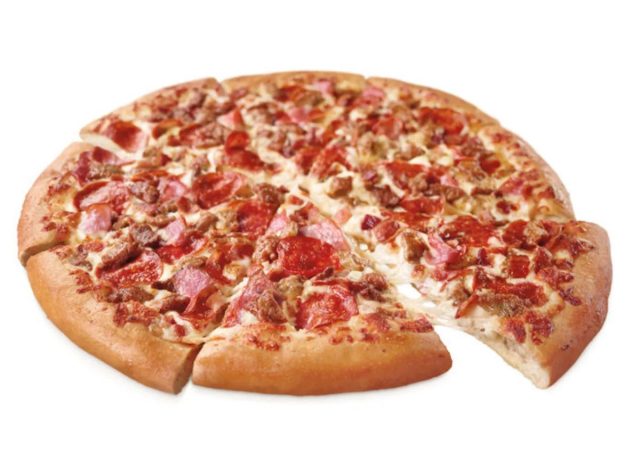
Saturated fat content: 53 grams per 1 medium pie
According to Best, “A medium cheese pizza made with mozzarella cheese will reach upwards of 50 grams of saturated fat for the entire pizza. The saturated fat and sodium content of these dishes, along with the lack of dense nutrition overall, makes them a cholesterol-raising risk. If you must consume these types of dishes, consider switching to lower fat cheese options, reducing the amount of fat a recipe calls for, or opt for a cheese-less pizza loaded with veggies.”









